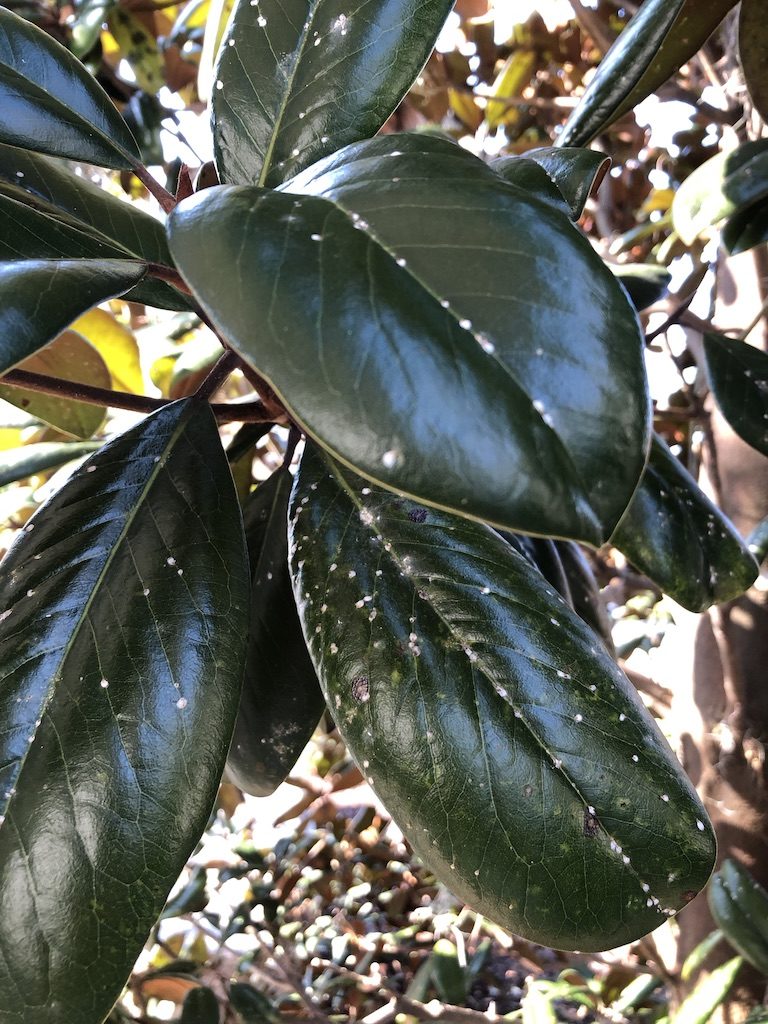Time to Monitor False Oleander Scales
go.ncsu.edu/readext?588344
en Español / em Português
El inglés es el idioma de control de esta página. En la medida en que haya algún conflicto entre la traducción al inglés y la traducción, el inglés prevalece.
Al hacer clic en el enlace de traducción se activa un servicio de traducción gratuito para convertir la página al español. Al igual que con cualquier traducción por Internet, la conversión no es sensible al contexto y puede que no traduzca el texto en su significado original. NC State Extension no garantiza la exactitud del texto traducido. Por favor, tenga en cuenta que algunas aplicaciones y/o servicios pueden no funcionar como se espera cuando se traducen.
Português
Inglês é o idioma de controle desta página. Na medida que haja algum conflito entre o texto original em Inglês e a tradução, o Inglês prevalece.
Ao clicar no link de tradução, um serviço gratuito de tradução será ativado para converter a página para o Português. Como em qualquer tradução pela internet, a conversão não é sensivel ao contexto e pode não ocorrer a tradução para o significado orginal. O serviço de Extensão da Carolina do Norte (NC State Extension) não garante a exatidão do texto traduzido. Por favor, observe que algumas funções ou serviços podem não funcionar como esperado após a tradução.
English
English is the controlling language of this page. To the extent there is any conflict between the English text and the translation, English controls.
Clicking on the translation link activates a free translation service to convert the page to Spanish. As with any Internet translation, the conversion is not context-sensitive and may not translate the text to its original meaning. NC State Extension does not guarantee the accuracy of the translated text. Please note that some applications and/or services may not function as expected when translated.
Collapse ▲False oleander scale, Pseudaulacaspis cockerelli, is a tropical and subtropical pest originally from China. It is common throughout many southern states but just reaches the very warmest parts of southeastern North Carolina. They are producing crawlers now so it is time to monitor their activity and plan management as needed.
False oleander scale feeds on the leaves of hundreds of plant species is a major pest of ornamental plants in nurseries and landscapes. It is very common on Magnolia grandiflora in southeastern North Carolina.
False oleander scales are also common pests of plants like accuba, boxwoods, oleander, Hedera spp., and many others.
False oleander scale feeding produces chlorotic spots on leaves and can stunt leaf growth. Heavy infestations can cause leaf loss and general decline of the infested plant. These symptoms are similar to other armored scales that feed on evergreen leaves like euonymus scales on euonymus and tea scales on camellia.
There are several generations of false oleander scale each year and during summer you can generally find all life stages at the same time. This complicates management because crawlers are the most susceptible to insecticides.
Many products are available to help manage armored scales and scales in general. A good place to start is with horticultural oil or insecticidal soaps. You can read about scale management with oils and soaps in a recent article. Other products are listed in the 2017 Southeastern US Pest Control Guide for Nursery Crops and Landscape Plantings.



